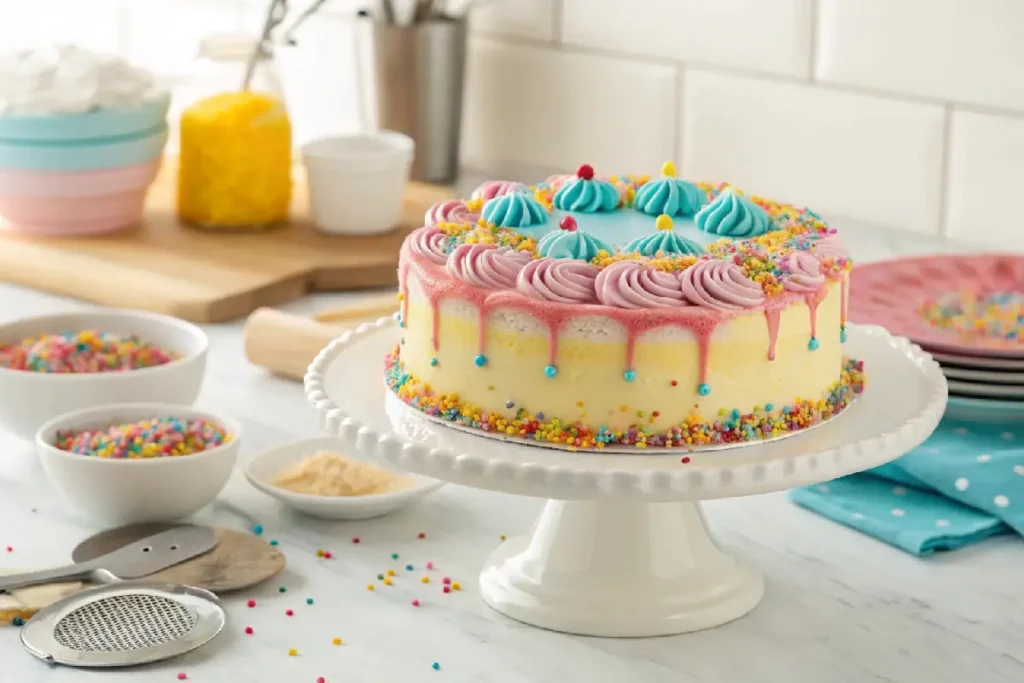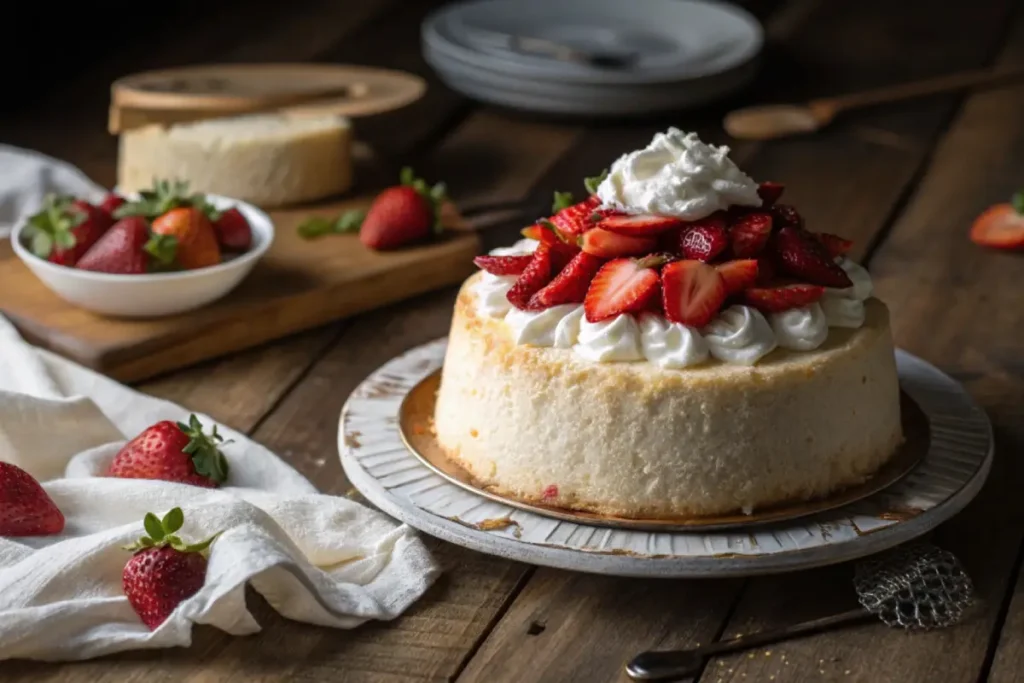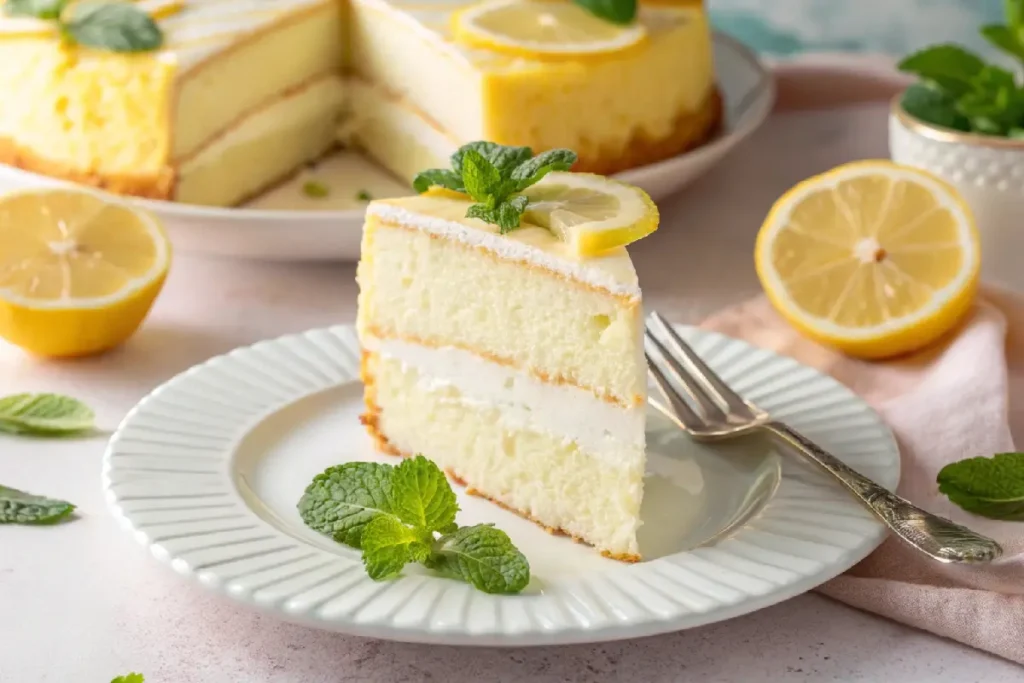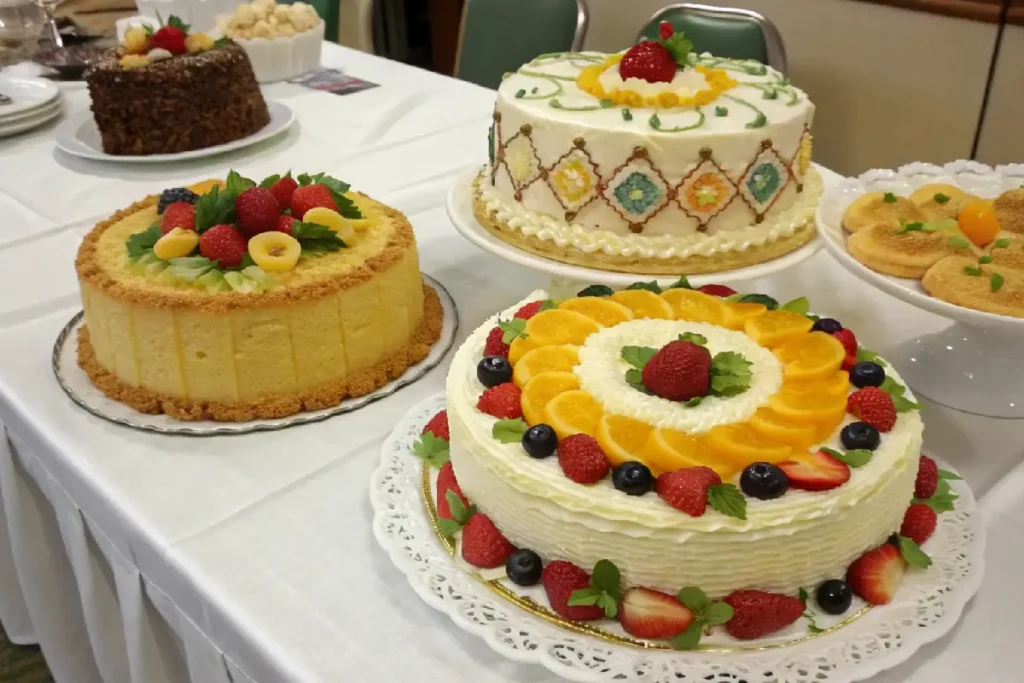Introduction to Cakes and Their Importance
The Cultural Significance of Cakes in Celebrations
When you think about celebrations, what often steals the show? That’s right—cakes! They’re not just desserts; they’re the centerpiece of our most cherished moments. In this article, we’ll explore the three major types of cakes, diving deep into each type and unraveling the delicious world of cake baking.
Cakes come in various shapes, sizes, and flavors. We can generally categorize them into three main types: butter cakes, foam cakes, and chiffon cakes. Each type has unique characteristics, flavors, and baking techniques. Whether you’re baking for a birthday party, a wedding, or a cozy family gathering, knowing these cake varieties helps you choose the perfect one.
Throughout this article, we’ll discuss the cultural significance of cakes, provide insights into the different types, and share tips for successful baking. If you’ve ever wondered about the distinctions and uses of various cake styles, you’re in for a treat! Let’s embark on this scrumptious journey into the world of cakes.
Craving more dessert inspiration? Dive into our blog and discover what the smallest cake is called, along with other bite-sized wonders!
The Three Major Types of Cakes Explained

When you ask, “What are the three major types of cakes?” you enter a delightful world of baking. Each type has its charm and flavor profile, making cakes a versatile dessert for any occasion. Let’s explore butter cakes, foam cakes, and chiffon cakes.
Butter Cakes
Definition and Characteristics of Butter Cakes
First, we have butter cakes. These cakes are made with a good amount of butter, giving them a rich flavor and moist texture. A classic example is the pound cake, made with equal parts butter, sugar, eggs, and flour. This results in a dense yet satisfying treat. Butter cakes often star in celebrations and can feature various frostings and fillings.
Looking for the perfect treat? Check out our delicious small chocolate cake recipe that’s moist and ideal for any occasion!
Popular Butter Cake Recipes to Try
You might find a butter cake layered with creamy chocolate frosting or topped with fresh fruit. The options are endless! They’re also easy to customize, allowing you to experiment with flavors like vanilla, almond, or lemon. When baking butter cakes, cream the butter and sugar together until light and fluffy. This process incorporates air, giving the cake a nice rise. If you have a special occasion coming up, consider a butter cake recipe to impress your guests!
Foam Cakes

Next on our list are foam cakes. These cakes are lighter and airier than butter cakes. They use whipped egg whites, relying on air bubbles for structure. A classic example is angel food cake, which is fluffy and tender—a favorite for summer desserts.
Since foam cakes contain no fat, they have a lighter texture. This makes them ideal for pairing with fresh fruits and whipped cream. Imagine serving a slice of angel food cake topped with strawberries and a dollop of whipped cream—it’s simply divine! To achieve that perfect airy texture, whip the egg whites until stiff peaks form. This technique ensures your foam cake rises beautifully in the oven. If you want a light dessert option, foam cakes are worth a try!
Chiffon Cakes

Last but not least, we have chiffon cakes. These cakes combine the richness of butter cakes with the lightness of foam cakes. Made with both egg yolks and whipped egg whites, chiffon cakes have a moist texture and unique flavor. One popular variation is lemon chiffon cake, which packs a zesty punch.
The combination of oil and eggs gives it a tender crumb, while whipped egg whites keep it light and airy. It’s perfect for warmer days when you want something refreshing. Baking a chiffon cake requires attention. Gently fold the whipped egg whites into the batter to maintain that fluffy texture. Don’t worry; once you master this technique, you’ll whip up delicious chiffon cakes in no time!

Want to master the art of moist cakes? Read our tips on why tres leches cakes are perfectly balanced, not soggy!
The Differences Between Cake Types
Now that we’ve explored what are the three major types of cakes, let’s dive into the differences between them. Understanding these distinctions can help you choose the right cake for your baking needs.
Ready to expand your baking knowledge? Discover the four basic types of cakes every baker should know and master your skills!
Texture and Flavor Profiles of Major Cake Types
When it comes to texture, butter cakes are dense and rich, perfect for those who love a hearty slice. On the other hand, foam cakes are light and airy, making them ideal for a refreshing dessert. Chiffon cakes strike a balance between the two, offering a moist texture that isn’t too heavy or too light.In terms of flavor, butter cakes shine with their rich buttery essence.
Foam cakes, being lighter, often take on the flavors of the toppings or fillings used with them. Meanwhile, chiffon cakes can be flavored with various ingredients, allowing for creative possibilities that cater to different taste preferences.
Common Ingredients and Techniques Across Cake Varieties
The ingredients and techniques used in each cake type are key to their unique characteristics. Butter cakes primarily rely on butter, sugar, and eggs, while foam cakes depend heavily on whipped egg whites for structure. Chiffon cakes, as a blend, use both oil and eggs to achieve their unique texture.
Overall, the differences in texture, flavor, and ingredients are what make each cake type special. So, whether you’re baking for a special occasion or just treating yourself, knowing these distinctions will help you make the best cake choice for any situation!
Simplify your baking with us! Explore our guide on what plain cake is called and discover the joy of simple baking bliss!
Choosing the Right Cake for Your Occasion
When it comes to baking, knowing what are the three major types of cakes can help you select the perfect cake for any occasion. Each type of cake has its own unique qualities that make it suitable for different events, whether it’s a birthday, wedding, or just a casual get-together.
Celebratory Cakes: Selecting the Perfect Cake Type for Events
For special celebrations, butter cakes are often the go-to choice. Their rich flavor and dense texture make them ideal for layering with frosting and fillings. Imagine a beautifully decorated chocolate butter cake at a birthday party—it’s sure to be a hit! You can also customize these cakes with various flavors, making them versatile for any celebration.
Everyday Cakes: Simple Choices for Daily Enjoyment
On the other hand, if you’re looking for something lighter for an everyday dessert, foam cakes are a fantastic option. Their airy texture makes them perfect for pairing with fresh fruits or a light whipped cream topping. A slice of angel food cake with strawberries can be a refreshing treat after dinner, especially during warmer months.
Confused by all the cake varieties? Check out our guide on 11 different types of cake and learn how to tell them apart!
Cakes for Dietary Needs
Lastly, if you or your guests have specific dietary needs, chiffon cakes can be a great choice. They can be made with healthier ingredients, such as whole wheat flour or natural sweeteners, without sacrificing flavor. Plus, their moist texture makes them enjoyable for everyone, regardless of dietary restrictions.
So, whether you’re celebrating a milestone or just enjoying a quiet evening at home, understanding the different types of cakes can help you make the best choice for your occasion. For more delicious recipes, check out our recipe article!
Curious about unique desserts? Learn all about what a bare cake is called in our easy guide and elevate your dessert game!
Tips for Baking Different Types of Cakes
Baking can be a fun and rewarding experience, especially when you know how to tackle the different types of cakes. Here are some tips to help you succeed in your baking adventures, no matter which cake type you choose.
Essential Tools and Equipment for Cake Baking
First, having the right tools is crucial. Invest in quality baking pans, mixing bowls, and measuring cups. For butter cakes, a good stand mixer can make creaming butter and sugar a breeze.
For foam cakes, a hand mixer works well for whipping egg whites to perfection. Don’t forget to have a reliable oven thermometer to ensure your oven is at the right temperature!
Avoiding Common Cake Baking Mistakes
Next, let’s talk about common mistakes. One of the biggest pitfalls is overmixing the batter, especially with foam cakes. This can deflate the air bubbles you worked so hard to create. Instead, gently fold in the ingredients to maintain that light texture. Also, make sure to properly measure your ingredients.
Curious about all the cake types out there? Explore our master list of cake types and uncover the secrets behind each delicious variety!
Baking is a science, and even a small miscalculation can affect the outcome.Lastly, always allow your cakes to cool completely before frosting or serving. This helps prevent the frosting from melting and ensures a beautiful presentation.
By following these tips, you’ll be well on your way to mastering the art of cake baking. Remember, practice makes perfect, so don’t hesitate to experiment with different recipes and techniques. Happy baking!
FAQs:
What is a butter cakes?
A butter cake is a type of cake made primarily with butter, sugar, eggs, and flour. This cake is known for its rich and dense texture. It often serves as the base for many layered cakes and can be flavored with various extracts, such as vanilla or almond. Butter cakes are perfect for celebrations, as they pair wonderfully with different frostings and fillings.
How do foam cakes differ from chiffon cakes?
Foam cakes and chiffon cakes are both light and airy, but they have distinct differences. Foam cakes, like angel food cake, rely solely on whipped egg whites for structure and contain no fat. This gives them a very light texture. In contrast, chiffon cakes use both egg yolks and whipped egg whites. This combination results in a moist cake with a tender crumb, making it richer than foam cakes while still remaining light.
Can I make gluten-free versions of these cakes?
Absolutely! Many cake recipes can be adapted to be gluten-free. For butter cakes, simply substitute regular flour with a gluten-free blend. For foam and chiffon cakes, make sure to use a blend that mimics the properties of all-purpose flour. With the right ingredients, you can enjoy delicious cakes that cater to gluten-free diets without sacrificing flavor or texture.
Conclusion
In conclusion, exploring what are the three major types of cakes opens up a world of delicious possibilities. From the rich and satisfying butter cakes to the light and airy foam cakes, and the beautifully balanced chiffon cakes, each type has its unique charm and uses.
Whether you’re baking for a special occasion or simply treating yourself to a sweet delight, knowing these cake types can help you make informed choices. Remember, you can mix and match flavors, fillings, and frostings to create something truly special.
So, why not grab your mixing bowls and start experimenting? With the tips and insights shared in this article, you’ll be well on your way to becoming a cake-baking pro! Happy baking, and enjoy every delicious bite along the way!







1 thought on “What Are the Three Major Types of Cakes? A Detailed Explanation”